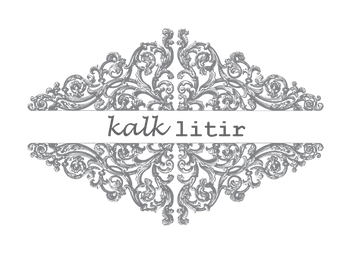Kalei - Information
About:
Kalei consists among others of mineral raw materials (maximum grain size 0.75 mm), and has cement free binding agents like chalk and hydraulic and moisture-regulating character.
The Kalei is weather-resistant once applied properly, and allows the structure of the masonry to be visible. In humid weather, Kalei shows the renowned "stain forming" which it is famous for.
The Brushing Technique:
The brushing technique helps determine the look and the substrate determines the colour nuance in the badgeon coat.
The thickness of the application, 1-3 mm is determined by:
-
the amount of mixing water that is used
-
the brush used
-
the number of coats applied
The first layer is used to colour in all the joints
The second layer is applied diluted* to finish quickly and without the formation of blocks on the painted surface.
*Dilution makes the colour a little lighter.
Absorption & colour nuances:
The extent to which the Kalei is absorbed by the surface, determines the intensity of the colour.
Highly absorbent surface will have a darker colour, compared to less absorbing surfaces.
Due to the difference between the absorption in different stones and surfaces, there will always occur colour differences, which is typical for Kalei.
Pigments:
A pigment is a substance that has the ability to colour a certain carrier.
Pigments cannot dissolve but are dispersed in a carrier, in this way the pigment continues to exist as a small grain.
The finer the pigment is divided, the higher the colour strength.
A pigment is suitable only for a specific application, if it is stable in that application.
This means that the pigment should not react with the carrier, it must not oxidize under the influence of sunlight (UV).
These conditions make that not all pigments may be used.
Kalklitir offers a range of pigments to be used to colour the Kalei.
Advantages of Kalei:
Kalei:
-
is environmentally friendly
-
has high renovating & decorating quality with good durability
-
has a matt, mineral lime-look
-
is a one component system, which include that both first and the second layer are coloured with pigment. In case of damage, the grey/beige underlayer will not be visible.
There are several techniques possible, from a fairly nuanced sandy and stripy look, to a much softer look without a lot of stripes (polished with a dry sponge or blocked brush)
Delightful processing by the long open time (processing time) without constant stirring and odourless character.
On a stable mineral, absorbent substrates, badgeon will adhere properly.
Kalei can be painted over with other facade paints after curing (+/- 1 month).
*We recommend that you always perform a preliminary test before applying Kalei to a wall, a sample system colour is also available.
Surfaces:
NB! Not every surface is suitable for Kalei!
The surface painted with Kalei must be a MINERAL ABSORBENT SUBSTRATE!
Substrates such as brick, pure concrete, some plasters etc. are mineral
(*nb! they also need to be absorbent)
Important!
A surface is absorbent when it absorbs water if moistened and it continues to absorb for some time.
If a half a glass of water is thrown at a wall, it has to absorb the moist and after 5-15 seconds, the shimmer of the moist should vanish and only a dark print remains for a long time.
There should not occur long sags of water and the dark moisture print should not immediately saturate and disappear.
Painting with Kalei on already painted surfaces (outside) always includes a certain risk and it is the responsibility of the executor/client to estimate the risk.
It is always best to remove all paint before applying with Kalei.
Generally, the adhesion of badgeon on painted and poorly absorbent substrates is less good.
Old layers of paint in poor condition is never a good surface for Kalei, and never apply Kalei onto water repellent products.
Do not apply Kalei on asphalt stone.
Once painted on a wall the Kalei cannot be removed but can be painted over.
Preparation:
All surfaces that are not to be painted with Kalei (doors, windows, etc.) must be covered/protected.
All surfaces that are to be painted with Kalei should be clean and free of grease.
Loose parts should be removed & loose joints must first be restored.
On very absorbent surfaces, especially at higher temperatures to strong winds the substrate should be wetted first.
Sufficient wetting of the substrate shall favourable influence the processing and curing.
This wetting should be done homogeneous and the substrate must not be saturated with moisture.
If the surface is too dry, it can cause shrinkage cracks at larger thickness. These can be eliminated through an extra layer.
Kalei can be applied at an ambient temperature and substrate temperature between 5°c and 35°c (ideal is 7°C - 20°C).
Packaging:
Kalei comes in 8 kg bags of dry powder in 15 colours.
Mixing Kalei:
The Kalei powder is packed in a plastic bag.
The Kalei is best mixed mechanically.
-
Remove the bag and start by pouring 2.5 litres of cold water into the bucket.
-
Pour the Kalei powder into the water and let it sit for 5 minutes, the powder absorbs water (do not add anything else), then start to mix until you have a homogenous mass.
-
If necessary, add more water until the desired consistency is reached.
*This quantity of extra water is determined by the pigmentation and the absorption of the substrate and also of the brush technique.
**Too much mixing water will make smooth brushing more difficult.
Applying Kalei:
Kalei is applied with a special brush in two layers.
The first layer is used to colour in all the joints
The second layer is applied diluted* to finish quickly and without the formation of blocks on the painted surface.
*Dilution makes the colour a little lighter.
Kalei is applied in 2 layers with a blocked brush.
-
The possible absorption of the substrate determines the colour nuance in the layer.
-
The thickness, between 1-3 mm, is determined by the mixing water, the brush and the number of layers.
-
In the first layer, make sure to apply colour to all joints
-
The first layer serves to "camouflage" and equalize the joints, preferably thickly applied.
-
The first layer must be completely dry (normally 1-5 hours) before the second layer can be applied.
-
The second layer is applied diluted to finish quickly and without formation of blocks on the exterior wall.
-
After 2-3 months the Kalei is normally completely cured by carbonation.
-
Ideal temperature for applying Kalei is between 7-20°C

Smoother, softer finish:
To easily obtain a nice smoother and softer result, the surface can be polished with a slightly damp sponge after absorption on the Kalei (15-30 minutes, depending on the circumstances).
This will make the surface smoother; the sand is rubbed off and brush stripes are less visible.
The sponging is performed when the Kalei is absorbed but not dry.
*Sponging is not possible with a lint-free, synthetic sponge!
Apply colour accents by using sponge:
By locally rubbing pigment, or water with pigment, by using a sponge in the absorbing Kalei, colour nuances and accent stones can be created.
After applying:
After applying Kalei the surface must be protected from rain and humidity for at least 48 hours, and up to 72 hours after application from frost.
There should be no sunlight falling on the facade and there must be shielding against strong wind and rain.
A very good yard decor can help in case of changing weather.
Higher temperatures and intense wind let the Kalei dry faster and make the working conditions more difficult and this rapid drying can also negatively affect adhesion.
Climate conditions:
Applying Kalei is preferably carried out in a dry period (ideal temperature is 7°C - 20°C).
It should not be applied after several days of rain, otherwise you risk that the Kalei will not be absorbed enough by the substrates.
*Walls that are saturated by moist can possibly show frost damage in extreme cold.
Kalei should be protected from moisture until completely dry, from rain during the first 48 hours and from frost up to 72 hours.
There should be no sunlight falling on facade and there must be shielding against strong winds.
Possible problems:
Irregularly absorbent:
-
Substrates which consist of different brickwork
-
Substrates that have different moisture content (rising damp, sloping water,..ect)
-
Partially painted or treated with a water repellent product
Solution:
-
Let the surface dry and apply another layer of Kalei
-
Each additional layer of Kalei is applied onto a smoother absorbent surface, through the underlaying layers.
-
Never apply Kalei onto water repellent products
Saturated surfaces:
If the surface is saturated with moisture from rain, rising damp ect. the Kalei will not be absorbed in by the substrate and the adhesive will be less good. This can cause damage after certain time when rising damp frost may occur.
Solution:
-
Let the substrate dry completely out before applying the Kalei and if necessary, resolve the moisture problem.
-
In case of damage, retouching locally in a drier period.
-
Stones beneath the waterproof layer can always provide sufficient adhesion problems and frost damage, applying Kalei in a dry period can provide a solution here.
Poor absorbent surfaces:
Machine-made bricks (low porosity), architectural concrete, some plasters etc. are slightly porous.
This will, after a wet period or after pre-wetting, not absorb the Kalei and give less adherent result.
Solution:
-
These substrates are always painted in a dry period, without pre-wetting.
-
Doing a test on the wall is always recommended.
Horizontal surfaces:
Horizontal surfaces are often saturated with moisture and will pollute faster.
Sloping water:
Roofs without crossing, wall anchors, window tablets without dripping gutter, etc. are causes of the sloping of polluted water.
This sloping water will sign off and result in a more rapid pollution.
Some of these causes can possible be solved in advance.
Windows & doors:
The connection is usually performed with flexible "sealant".
Because these sealants are flexible and non-absorbent, they are not suitable for absorbing Kalei.
Solution:
-
Old sealant can be rubbed in with a thin layer of sealant, suitable for natural stone, and immediately rubbed in with white sand.
-
This rougher surface provides improved adhesion.
-
Because the sealant is not absorbent, depending on the colour of the Kalei can still be a small difference in colour appearance.
*Please note: we can only give guarantee for adhesion on absorbent substrates, applying Kalei on sanded sealant is the "best" solution in this case.
Salt exsanguination:
Kalei offers no solution to salt exsanguination.
The salt will migrate through the surface of the Kalei.
Many salts in combination with the saturated stones can possible damage the Kalei.
Very deep, ragged, sandy or loose joints:
You can apply Kalei to sandy and cracked joints.
With very deep joints it is definitely essential that the first layer is completely dry before applying the second layer.
After the application on the first layer sometimes shrinkage cracks can occur, but they are perfectly removed by the second layer of Kalei.
All loose joints must be repaired.
Plinth stone or painted tarred bottom plinth:
Applying Kalei underneath the facade to cover completely is not recommended.
Rising damp through Kalei below the water-repellent film can always lead to contamination and/or frost damage.
If a plinth was painted dark or tarred, it is not suitable to be painted with Kalei.
Both substrates are non-absorbent and tar can possibly bleed out.
Do not apply Kalei on asphalt stone.
Guarantee:
Kalkhome vof guarantees the highest quality of its products, however it does not accept any liability for the improper application of its products.



